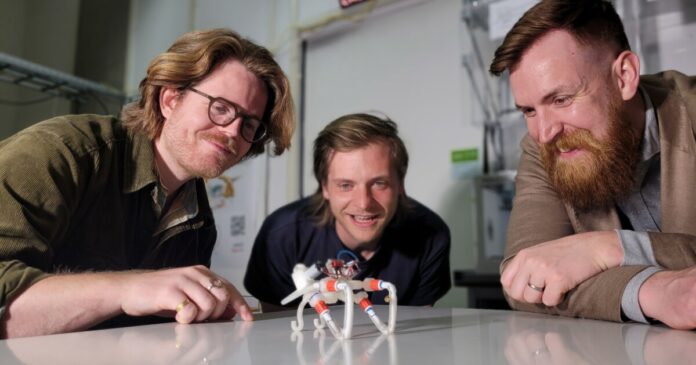Introduction to Soft Robotics
Soft-bodied robots are often simple and low-cost devices, but they typically require complex onboard electronics to control their movement. However, a new robot has been developed that utilizes a phenomenon of physics to automatically move its inflatable legs, eliminating the need for complex electronics.
Design and Construction
The tiny robot, designed by Alberto Comoretto, Mannus Schomaker, and Bas Overvelde at the Netherlands’ AMOLF institute, has been built in both two- and four-legged variants. Each leg consists of a loop of elastomer tubing with a kink in it. As air is smoothly and continuously pumped into the leg, the kink moves down the length of the tube, causing it to oscillate.
The Science Behind the Movement
This phenomenon is the same principle that is at work in the gyrating inflatable "tube dancers" used to promote businesses. When the robot’s legs are initially activated, they move chaotically. However, within milliseconds, as they interact with one another and with the terrain, they automatically start moving in unison.
Movement and Speed
The bot is then capable of scooting at speeds of up to 30 body lengths per second on flat surfaces, which is far faster than any other air-powered robot. If the robot breaks its stride upon stumbling on an obstacle or uneven terrain, its legs get back into sync as soon as it picks up speed again.
Adaptive Movement
Even more impressively, due to the physical properties of liquid, the buoyant bot automatically adopts a back-and-forth alternating-leg swimming gait when it enters the water. This adaptability makes the robot highly versatile and able to navigate different environments with ease.
Potential Applications
The technology behind this robot could one day be utilized in applications such as micro-robots that deliver medication within the body, energy-efficient assistive exoskeletons, or machinery designed for use in harsh environments where electronics may fail, such as outer space.
Conclusion
The development of this soft robot is a significant step forward in the field of robotics. As Assoc. Prof. Overvelde notes, "Simple objects, like tubes, can give rise to complex and functional behavior, provided we understand how to harness the underlying physics." The study of this robot has been published in the journal Science, and its potential applications are vast and exciting. With its ability to move and adapt without complex electronics, this robot is a giant step for robotkind.

